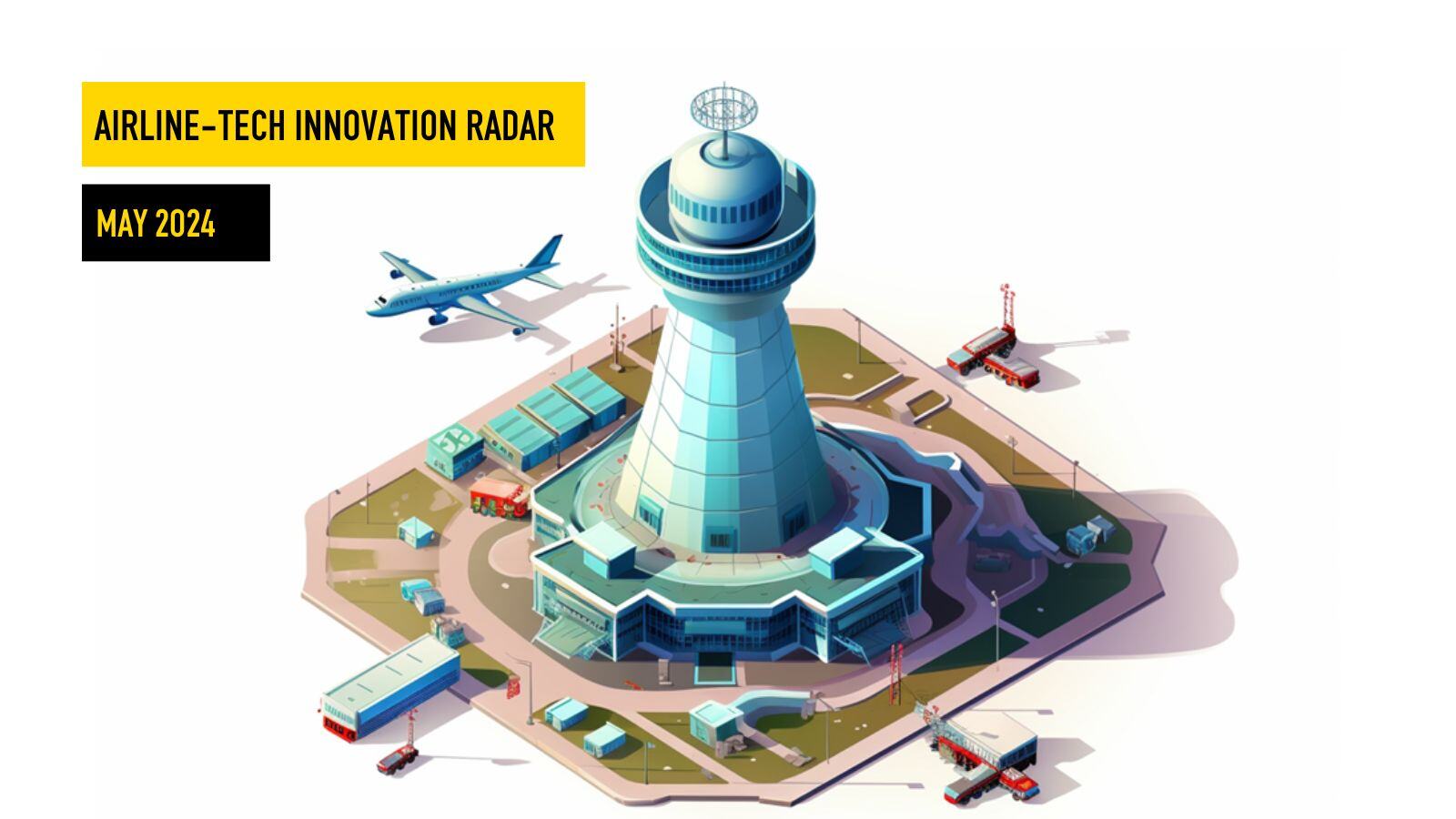Welcome back to our monthly OAG Airline-Tech Innovation Radar.
Compared to our vibrant April edition, May has seen a quieter landscape in terms of groundbreaking innovations. Nonetheless, the developments that did surface are particularly noteworthy for their strategic impact and potential to redefine critical aspects of airline operations and the air travel retail experience.
Let's delve into the three standout innovations for this month and explore why they captured our attention.
Innovation #1: Lufthansa Partners with Meta for a Mixed Reality Experience
Lufthansa has announced an exciting partnership with Meta, Facebook's parent company, to elevate the inflight experience in its business class.
This collaboration introduces the Meta Quest 3 Mixed Reality (MR) headsets to passengers flying in the newly launched Allegris Business Class. As part of a pilot program, selected flights will be equipped with these headsets, providing passengers access to a variety of custom MR content. This content ranges from entertainment and travel to wellness and games, all designed to operate seamlessly in the Quest 3’s Travel Mode.
Why do we find this innovation so compelling?
The initiative marks the first time an airline will offer Meta’s Quest 3 headsets in a commercial inflight setting. It underscores Lufthansa’s ambition to pioneer customer experiences and showcases an airline willing to explore new technological frontiers to enhance passenger satisfaction.
Secondly, the inflight entertainment (IFE) category is currently witnessing a remarkable technological transformation. This was highlighted in our previous deep dive into IFE, where we anticipated that airlines might soon begin to experiment with spatial computing devices. Lufthansa’s pilot program with Meta aligns perfectly with this vision, potentially setting a new trend in how travelers are entertained aboard flights. This approach could pave the way for more immersive and engaging ways to keep passengers entertained and informed during flights.
So while it may seem like a playful addition at first glance, the strategic deployment of mixed reality in IFE speaks to a deeper commitment to innovation in airline services.
Innovation #2: Virgin Atlantic’s Accountable SAF Flight
Virgin Atlantic has shared significant findings from Flight100, the first-ever transatlantic flight powered entirely by Sustainable Aviation Fuel (SAF), which took off from London Heathrow to New York JFK in November last year. This flight, partly funded by the UK government, has been a focal point both for its potential to reduce carbon emissions and for the controversy it sparked among scientists and environmental groups due to uncertainties about its actual environmental impact.
The now-published outcomes from the flight look very promising:
- The consortium involved in this flight, including Virgin, Boeing, Rolls-Royce, and several academic and environmental research institutions, reported that the flight produced only 64% of the emissions compared to a standard jet fuel flight. This marks a substantial reduction, achieving one-third fewer emissions than conventional flights.
- Apart from the notable reduction in carbon emissions, the flight’s SAF usage demonstrated a 40% decrease in non-CO2 particulate emissions. This is particularly significant as it suggests that SAF can not only help in reducing greenhouse gases but also improve local air quality around airports and potentially lessen the formation of persistent contrails.
While the overall emissions reduction was not as dramatic as most SAF projections typically indicate—with most sources citing SAF's potential to cut lifecycle emissions by up to 80%—the results are nevertheless promising.
Importantly, this flight was conducted without any modifications to the engines, airframe, or fuel infrastructure, and it adhered to the same safety standards as any other commercial flight.
The transparent sharing of these results provides much-needed clarity about SAF's impact, underscoring its potential as arguably the key component in the aviation industry’s strategy to mitigate environmental impact.
INNOVATION #3: CHANGI AIRPORT'S AUTONOMOUS BAGGAGE HANDLING
This past month, Changi Airport announced a groundbreaking initiative to introduce a fleet of four autonomous baggage-handling vehicles developed by the UK-based technology startup Aurrigo. These self-driving pods, designed for a range of use cases from shopping malls to university campuses, will now pilot underwing operations at Changi Airport.
Why does this innovation stand out?
Given the global labor shortage that has repeatedly caused major disruptions across the airline sector, the introduction of autonomous technologies to support human workers and traditional ground service equipment represents a strategic move to not only address immediate operational challenges but also pave the way for future resilience in airport operations.
Secondly, Changi and Aurrigo's partnership serves as a best-practice example of how aviation stakeholders can drive long-term innovation by collaborating with emerging players from the startup ecosystem. Changi and Aurrigo have spent over two years conducting trial cases to test the vehicles’ resilience under various weather conditions, demonstrating a commitment to thorough and long-term innovation.
Last but not least, Aurrigo's vehicles significantly improve the current standards of tow tractors used in baggage handling. With enhanced maneuverability on the apron and the addition of robotic arms, their design is geared towards replicating the functions of traditional equipment and improving upon them, making operations both more efficient and more sustainable.
This initiative certainly showcases Changi’s leadership in adopting innovative technologies across its entire airport operations stack.
WRAPPING UP MAY'S INNOVATIONS
This concludes the May edition of our Airline-Tech Innovation Radar. Despite a quieter month, the innovations we explored highlight the continuous push towards smarter, more sustainable airline practices and collaborative technological advancements.
Stay tuned for the next edition as we continue to explore cutting-edge innovations that are defining the future of airline technology, add your email below to receive a weekly digest 🔔



